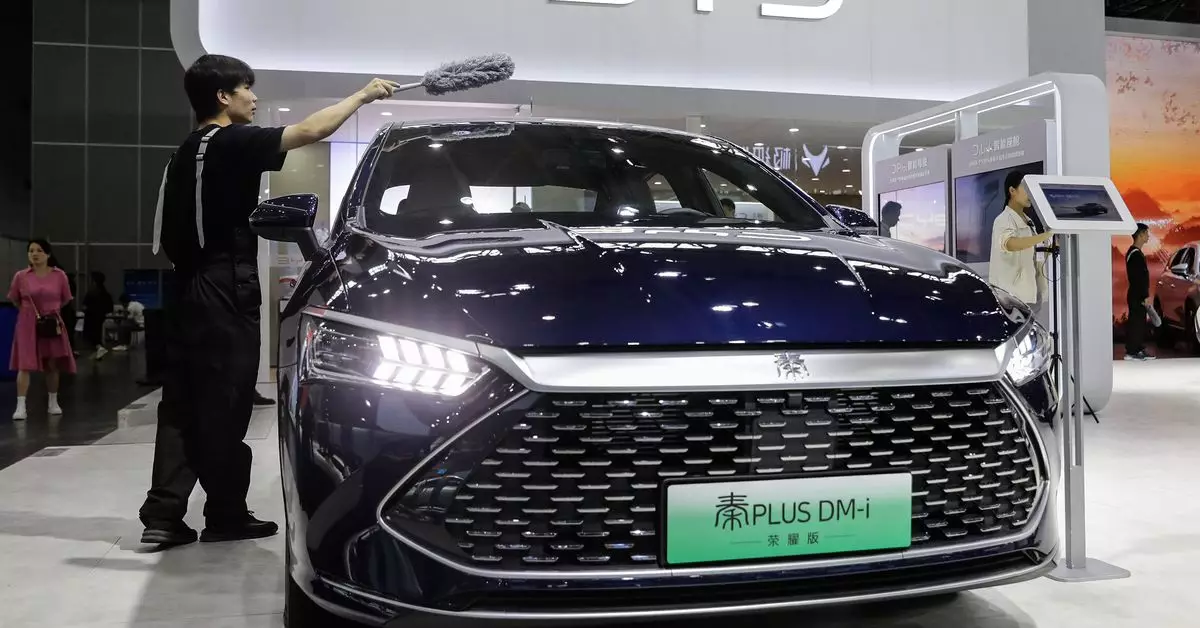The landscape of the automotive industry is undergoing significant transformations, particularly as advancements in technology intertwine with international trade dynamics. The Biden administration has recently proposed new regulations that restrict the sale and importation of connected vehicle software from countries deemed as security threats, notably including China. This regulation marks a pivotal moment in U.S. automotive policy, laying the groundwork for the future of how vehicles are manufactured, imported, and utilized in this evolving market.
The administration’s stance is built upon pressing concerns regarding national security, as articulated by the White House. The logic follows that software and hardware originating from adversarial nations, particularly China, present heightened risks of sabotage and intrusive surveillance. Touted dangers include the potential for foreign entities to remotely disable vehicles or exploit them for data related to U.S. citizens. Such ramifications compel a broader reflection on how technology interacts with transportation; it’s not merely about efficiency or convenience anymore but involves significant implications for the safety and privacy of the American populace.
Moreover, the looming regulation targets various interconnected technologies, ranging from Bluetooth to onboard computers. As vehicles become increasingly sophisticated, the reliance on external connectivity grows, making these technological components particularly vulnerable to foreign manipulation. Given these realities, the push for these regulations is viewed as a prudent precaution by some, even as it raises the stakes for both consumers and automobile manufacturers.
In an escalating trade conflict, the Biden administration has also implemented stringent tariffs on Chinese imports, particularly focusing on electric vehicles (EVs) and essential components like batteries. With these tariffs reaching 100% for certain vehicles, the repercussions are multifaceted. While the intent is to protect domestic manufacturing and boost local industries, there is an apparent irony in the U.S. imposing steep tariffs on affordable electric vehicles during a time when it struggles to compete in this burgeoning market sector.
China has positioned itself as a powerhouse in the automotive industry, especially concerning budget EVs. With models like the BYD Seagull commanding lower price points and offering commendable mileage, the U.S. automotive sector faces existential threats from the onslaught of foreign products. High tariffs may act as a temporary barrier, but they raise questions about long-term sustainability and competitiveness of U.S. manufacturers, who must continue innovating without falling behind international players who capitalize on advanced technology at economically viable prices.
American automakers are grappling with a dual dilemma: the pressing requirement to modernize their offerings and the escalating pressures of international competition. Executives within the industry have echoed sentiments reflecting fears that without restrictions, the U.S. automotive market could face severe disruption from Chinese imports. The potential for displacement is palpable, with industry leaders like Tesla’s Elon Musk warning of an existential threat to U.S. automakers should these trade barriers not hold.
Contrary to Musk’s initial rhetoric supporting tariffs as necessary, he later altered his stance, vocalizing opposition to these measures. This inconsistency highlights a particular challenge that many leaders within the industry face—a negotiation between national policy and market realities. Furthermore, concerns emerge that significant tariffs and regulations could lead to higher prices, limiting consumer options and access to affordable, innovative vehicles that boost EV adoption.
The proposed regulatory framework delineating bans on specific software and hardware is set to be phased in gradually, with software restrictions expected by the 2027 model year and hardware by 2030. However, such timelines must allow manufacturers the necessary leeway to adapt without stifling innovation. As the industry progresses towards incorporating advanced technologies, the potential repercussions of these regulations must be carefully evaluated.
Critics of the U.S. approach argue that overzealous governmental intervention could stifle competition and technological advancement. The challenge lies in achieving a balance—ensuring national security while simultaneously fostering an environment where innovation thrives. The evolving landscape of connected vehicles holds promise, yet without a nuanced approach, the path forward may be fraught with complications for consumers, manufacturers, and the economy at large.
As the U.S. seeks to reinforce its automotive industry through protective regulations, it must remain vigilant about the implications for innovation, competitiveness, and ultimately, consumer choice. The future of mobility demands a delicate balance between safeguarding national interests and encouraging a vibrant, forward-thinking automotive landscape.


Leave a Reply